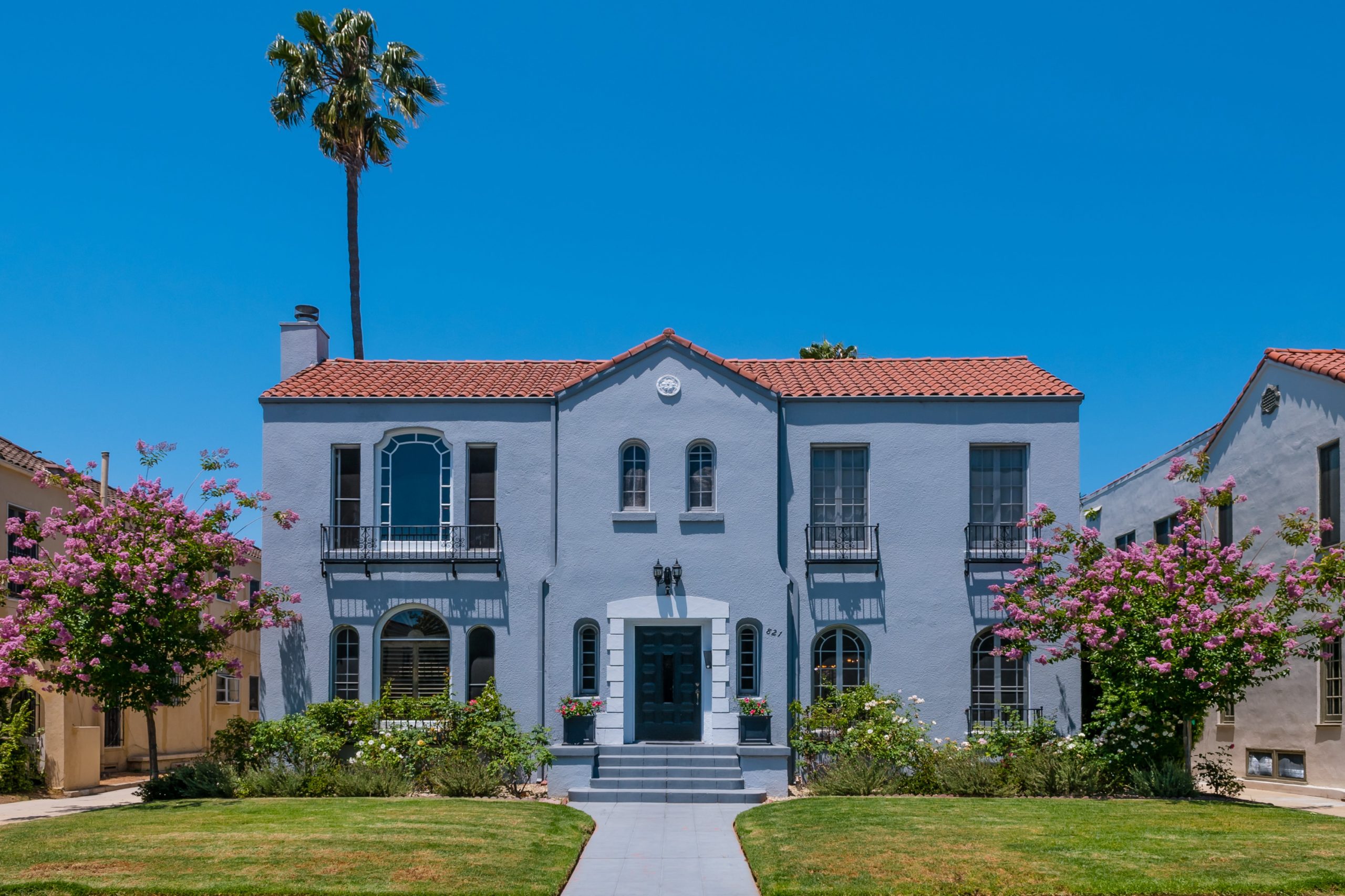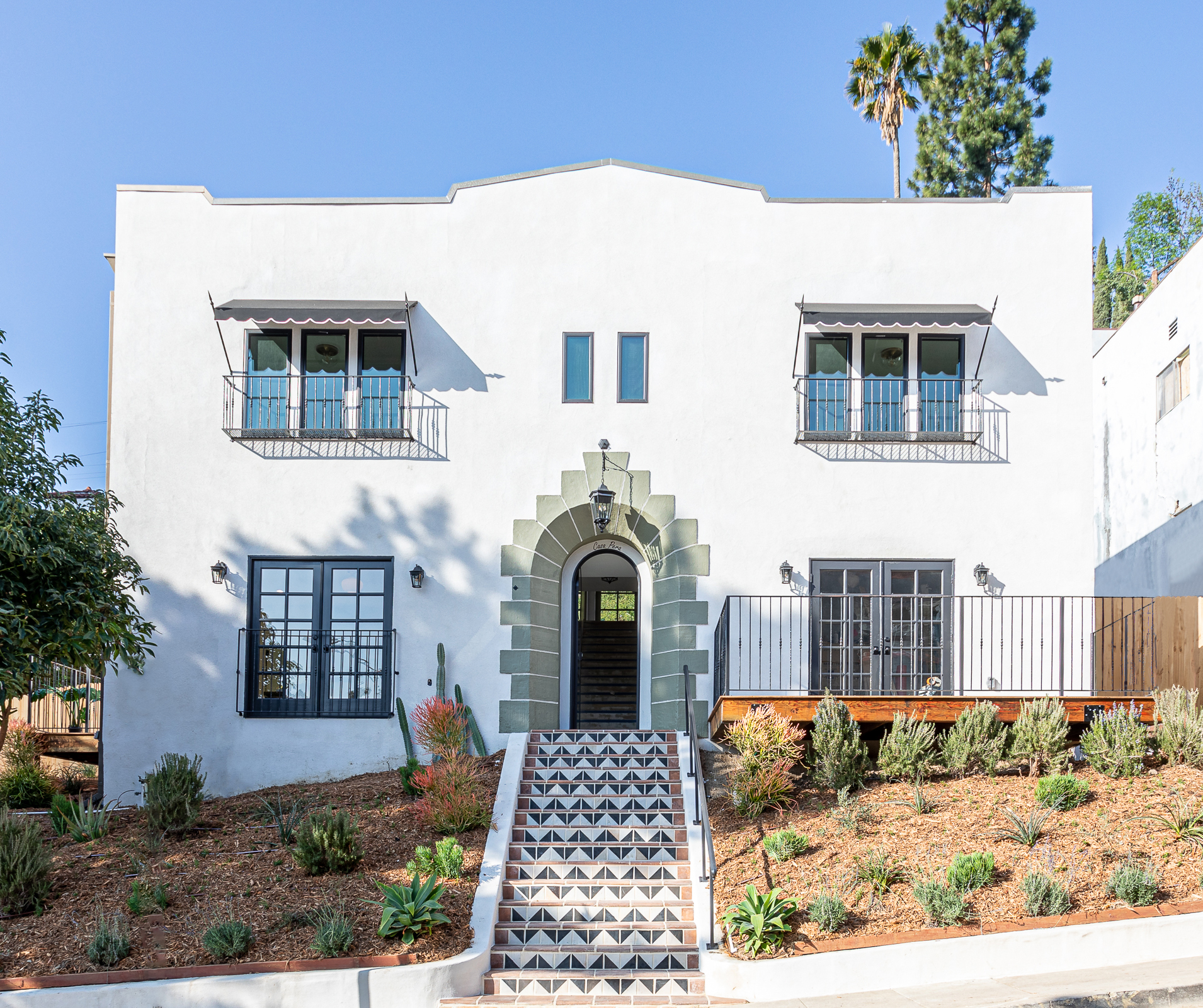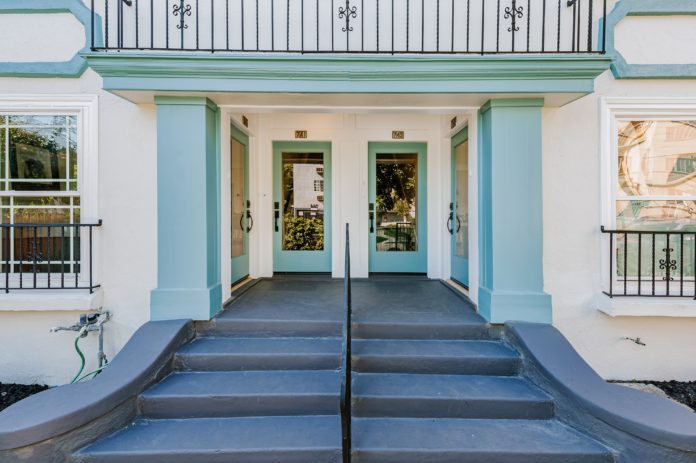It’s no secret that residential real estate is expensive in L.A., where rental rates in prime areas have been soaring and the cost of homeownership continues to climb.
From May 2019 to May 2020, the price of homes in the L.A. market increased 4.4%, according to data from CoreLogic. Rent, meanwhile, has increased 65% over the last decade, according to a study by listing service RentCafe.
That pricey reality has led some buyers to follow innovative paths to homeownership, including a vehicle known as the tenancy in common, or TIC.
TICs are a form of co-ownership. Although the concept isn’t new — experts say it started getting traction here about three years ago — its popularity is on the rise.
“The market is growing really fast,” said Christopher Stanley, a developer and seller of TICs at Vanguard Properties. He is currently working on a few tenancy-in-common deals around L.A.
The number of properties available for tenancy-in-common conversion, the availability of new financing options and price points that can be lower than condos are all fostering the use of TICs.

Unlike a condo where a buyer owns their individual unit, under a TIC an individual owns a share of the larger property with the exclusive use rights to a specific unit.
These buildings are often older properties that were once rental units. Converting these buildings to TICs has been met with some ire from tenants’ rights groups amid an affordable housing shortage. Some buildings that are now TICs were formerly rent-controlled properties.

Proponents of homeownership, however, argue that tenancies in common, which are priced lower than other residential real estate offerings, allow people the chance to buy a place and build equity.
The Business Journal spoke with some TIC experts to help provide a better understanding of this relatively new form of ownership.
Why are we hearing more about TICs in residential real estate now?
TICs have been popular in San Francisco for a long time, experts say, but have only recently gained favor in the Los Angeles market.
A young San Francisco lawyer named Andy Sirkin pioneered the tenancy-in-common concept in the 1980s, according to Elizabeth McDonald, founder of Highland Park-based brokerage The Rental Girl, which works with landlords converting units into TICs.
Initially, Sirkin entered into a TIC with friends as a way to be able to afford real estate in the notoriously expensive Bay Area.
McDonald said Sirkin’s model became hugely popular and soon more and more people were asking him to write tenancy-in-common agreements.
“It was an idea that was sort of born out of a lack of inventory and affordability. It was a consumer cost idea, a consumer product,” McDonald said.
A big reason TICs have become more popular in L.A., besides the fact that financing for them now is easier to come by, is cost.
“You can really fractionalize ownership. That’s the beauty of what this is all about. It breaks down ownership, so it becomes more affordable,” McDonald said, adding that the purchase price for TICs was generally 10% to 20% lower than for comparable condos.
Vanguard Properties’ Stanley said that in his experience, TICs are up to 15% cheaper than condos because “you don’t get a deed to your unit — you get a percentage deed to the building.”
He added that many TIC buyers are first-time homeowners who are looking to trade up within 10 years’ time. A tenancy in common is a way for them to own in the meantime.

TICs, experts agree, are also growing because of the ease of converting apartment buildings to TICs.
For a developer, TICs don’t carry extensive regulations and requirements, including a large number of parking spaces, unlike condos.
Eric Sussman, an adjunct professor of accounting and real estate at UCLA who has worked on a tenancy in common in the past, said the entitlement process and parking requirements “can really limit” condo conversions.
McDonald added that for some small rental properties, mom-and-pop landlords can’t always keep up with their buildings, or kids inherit the properties and don’t want to deal with tenants. These buildings are prime candidates for TIC conversion.
“It’s a great way to sell a unit you couldn’t make a condo out of,” Stanley said. “TICs are generally older rental buildings that can’t really be converted but are beautiful buildings,” he added. “These are things that in most cities you can convert to condos, and they sell like hotcakes. There’s demand for these kinds of homes.”
Stanley said the tenancy-in-common market has been growing in L.A., but “it’s never going to be giant.”
How are TICs financed?
When TICs started gaining popularity, buyers had to get a group loan together. If one person defaulted, everyone else did as well. And if one person wanted to sell, they needed permission to sell their loan.
Eventually banks started offering fractional loans, so people interested in TICs could finance their section of the purchase separately.
Today, only Sterling Bank & Trust, which has an office in Koreatown, and National Cooperative Bank, based in Virginia, offer these fractional tenancy-in-common loans in Los Angeles, brokers said.
“They changed the game for tenancy in commons,” Stanley said of Sterling Bank, which began offering fractional loans 12 years ago in San Francisco.
Sterling Bank handles 95% of TIC loans, according to McDonald, who added that the bank’s fractional offerings are the reason why the TIC market really took off.
“The fractional loan basically allows each owner to get a loan individually, to get a fractional loan. If another owner in the building didn’t pay their mortgage, the lender would foreclose on that owner only,” she said. “It changed the game for TICs and made tenants in common more on par with condos.”
TIC loans, unlike other mortgages, have no secondary market, meaning banks do not sell the loans. As a result, there are no 30-year fixed options. Instead there is one adjustable rate, brokers say. A larger down payment and credit rating are generally required as well.
For example, a TIC with a purchase price of $899,000 and a down payment of 20% could have an initial rate of 3.5%, which after an initial fixed period would increase to 3.5% plus index.
“The terms of the notes are not as favorable (for borrowers) as more traditional financing notes,” said Sara Holland, a partner at Lewis Brisbois Bisgaard & Smith.
These terms protect banks that cannot foreclose on a property just because one person defaults. Stanley said he expects to see more banks offer fractional loans in the future.
Can I lease my property now and sell it later?
The short answer to both questions is yes.
Stanley added, however, that most tenancy-in-common buyers are looking to occupy the property. “You don’t really see investors buying these,” he said.
Stanley added that there can be complications if the property is subject to the Ellis Act, which allows landlords to evict renters if they’re getting out of the rental business but not to rent to new tenants at a higher price.
As far as selling goes, the lower price point compared to other homes in the area can make TICs appealing, but the financing and lack of understanding about TICs can cause some issues because they’re still such a new product.
“As they become more of a staple people will say, ‘Oh, I know what that is and I get a discount,’ or, ‘Oh, I know what that is, and I don’t want it,’” Stanley said. “As the years go on, it will be easier to sell them.”
McDonald said buyers who won’t qualify for a TIC loan are out of the running to purchase into the property. Buyers, she added, generally need to put at least 10% down and have great credit. And just because a buyer is approved for a loan to buy a house doesn’t mean they will be approved for a TIC loan. Because so few banks give TIC loans, McDonald said there can be delays in getting approved.
Are TICs available in commercial real estate?
TICs are not unheard of in commercial real estate although many experts consider them to be out of vogue.
Tom Lagos, an executive director at Institutional Property Advisors, said that in the mid ’90s there were only a handful of TIC sponsors, and in the 2000s there were hundreds in L.A.
But it didn’t last.
“After the financial crisis it exploded, and I haven’t seen it come back,” Lagos said.
He added that it became difficult for individual owners to come together and make decisions while some people were taking shortcuts to get deals completed.
“It really exposed that whole industry to a point where that TIC model does not function anymore. Where I see it still functioning is more of a strategy where I know you, and we know each other, and we want to go in on a property together,” Lagos added.
Steve Lurie, a real estate partner in the firm Greenberg Glusker Fields Claman & Machtinger, said TICs are not that common in the commercial space but were sometimes used in 1031 exchanges to allow owners to trade into different properties.
And like with residential properties, TIC financing can be tougher for commercial sites.
“A co-tenancy does limit the owners from a financing perspective,” Lurie said.
“There are less choices out there. There are some lenders that prefer not to lend to co-tenancies because the agreements don’t have the same protections that the lenders want,” he added.

